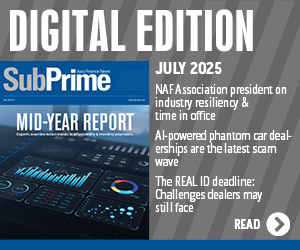Auto defaults drop for sixth consecutive month

Perhaps again reflecting how COVID-19 is turning data topsy-turvy, S&P Dow Jones Indices and Experian reported the auto-finance default rate in May came in at the lowest rate in 10 years.
According to the latest update of the S&P/Experian Consumer Credit Default Indices, the auto default rate dropped 10 basis points in May to land at 0.56%. The rate now has declined each month so far this year and now stands roughly half of what it was back in November and December when it was 1.02%.
The default reading coincides with TransUnion also reporting that more than 100 million consumer-credit accounts currently are in some kind of modification program because of the coronavirus pandemic. Those accounts include not only auto financing, but mortgages and credit cards, too.
Meanwhile, the composite rate, which represents a comprehensive measure of changes in consumer credit defaults also came in lower in May, dropping 12 basis points to settle at 0.78%.
Also dropping significantly, analysts noted the first mortgage default rate fell 14 basis points in May to 0.52%.
However, moving in the opposite direction, S&P and Experian pointed out the bank card default rate rose 17 basis points to 4.40%.
Looking at the data from the five largest U.S. metropolitan areas, analysts found that May default rates dipped month-over-month.
S&P and Experian discovered Chicago posted the largest decrease, down 13 basis points to 0.93%. New York was just off that pace, dropping 12 basis points to 0.83%, while Miami was right behind with an 11 basis-point decline to settle at 1.43%.
Dallas’ reading moved 9 basis points lower to 0.79%, while Los Angeles fell four basis points to 0.70%.
Jointly developed by S&P Indices and Experian, analysts noted the S&P/Experian Consumer Credit Default Indices are published monthly with the intent to accurately track the default experience of consumer balances in four key loan categories: auto, bankcard, first mortgage lien and second mortgage lien.
The indices are calculated based on data extracted from Experian’s consumer credit database. This database is populated with individual consumer loan and payment data submitted by lenders to Experian every month.
Experian’s base of data contributors includes leading banks and mortgage companies and covers approximately $11 trillion in outstanding loans sourced from 11,500 lenders.


